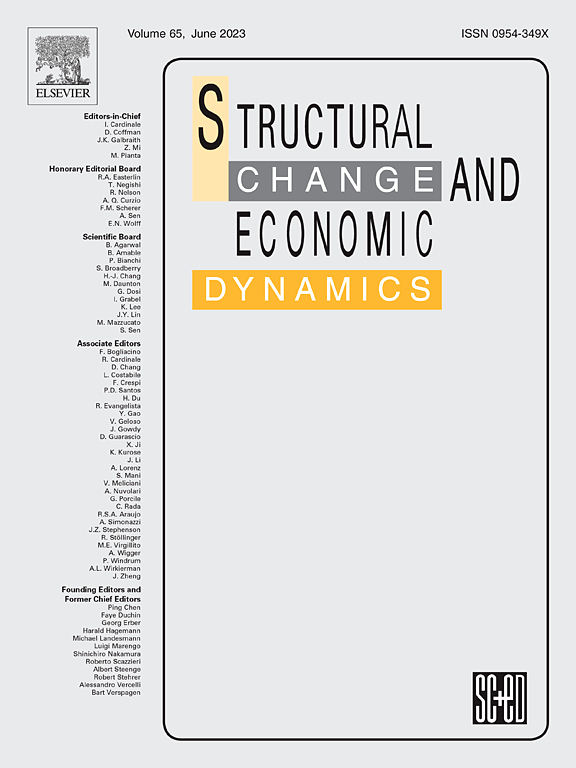Mapping CO2 emissions in Global Value Chains: Does a value-added smile curve imply an emissions frown curve?
IF 5.5
2区 经济学
Q1 ECONOMICS
引用次数: 0
Abstract
Global value chains (GVCs) play a crucial role in international trade. High value-added activities tend to cluster at the start and the end of GVCs, resulting in a U-shaped relationship across production steps known as the “smile curve”. The distribution of CO emissions along the value chain, however, is relatively unexplored. Here, we map embodied CO emissions to test whether emissions are distributed differently across production stages than value–added. We find that activities with high emission intensities cluster at early stages, while late stages exhibit lower emission intensities. This results in a downward-sloping CO emissions curve with tentative evidence of a frown-curve pattern. Also, we find that the prevalence of a U-shaped pattern in the distribution of value-added across production stages declined significantly since 1995. We explore several examples and provide an interactive tool to explore the mapping of value-added and emissions across more than 1,000 GVCs of industrial goods.
绘制全球价值链中的二氧化碳排放:附加值微笑曲线是否意味着排放皱眉曲线?
全球价值链在国际贸易中发挥着至关重要的作用。高附加值活动往往聚集在全球价值链的起点和终点,导致生产步骤之间的u型关系,即“微笑曲线”。然而,二氧化碳排放在价值链上的分布却相对未被探索。在这里,我们绘制了具体的二氧化碳排放量,以测试排放量在生产阶段的分布是否与增值阶段不同。研究发现,高排放强度的活动集中在早期阶段,而后期则表现出较低的排放强度。这就产生了一条向下倾斜的二氧化碳排放曲线,并初步证明了皱眉头曲线的模式。此外,我们还发现,自1995年以来,附加值在各生产阶段的分布呈u型分布的趋势明显下降。我们探讨了几个例子,并提供了一个交互式工具来探索1000多个工业产品全球价值链的增值和排放映射。
本文章由计算机程序翻译,如有差异,请以英文原文为准。
求助全文
约1分钟内获得全文
求助全文
来源期刊

Structural Change and Economic Dynamics
ECONOMICS-
CiteScore
9.60
自引率
4.90%
发文量
159
期刊介绍:
Structural Change and Economic Dynamics publishes articles about theoretical, applied and methodological aspects of structural change in economic systems. The journal publishes work analysing dynamics and structural breaks in economic, technological, behavioural and institutional patterns.
 求助内容:
求助内容: 应助结果提醒方式:
应助结果提醒方式:


